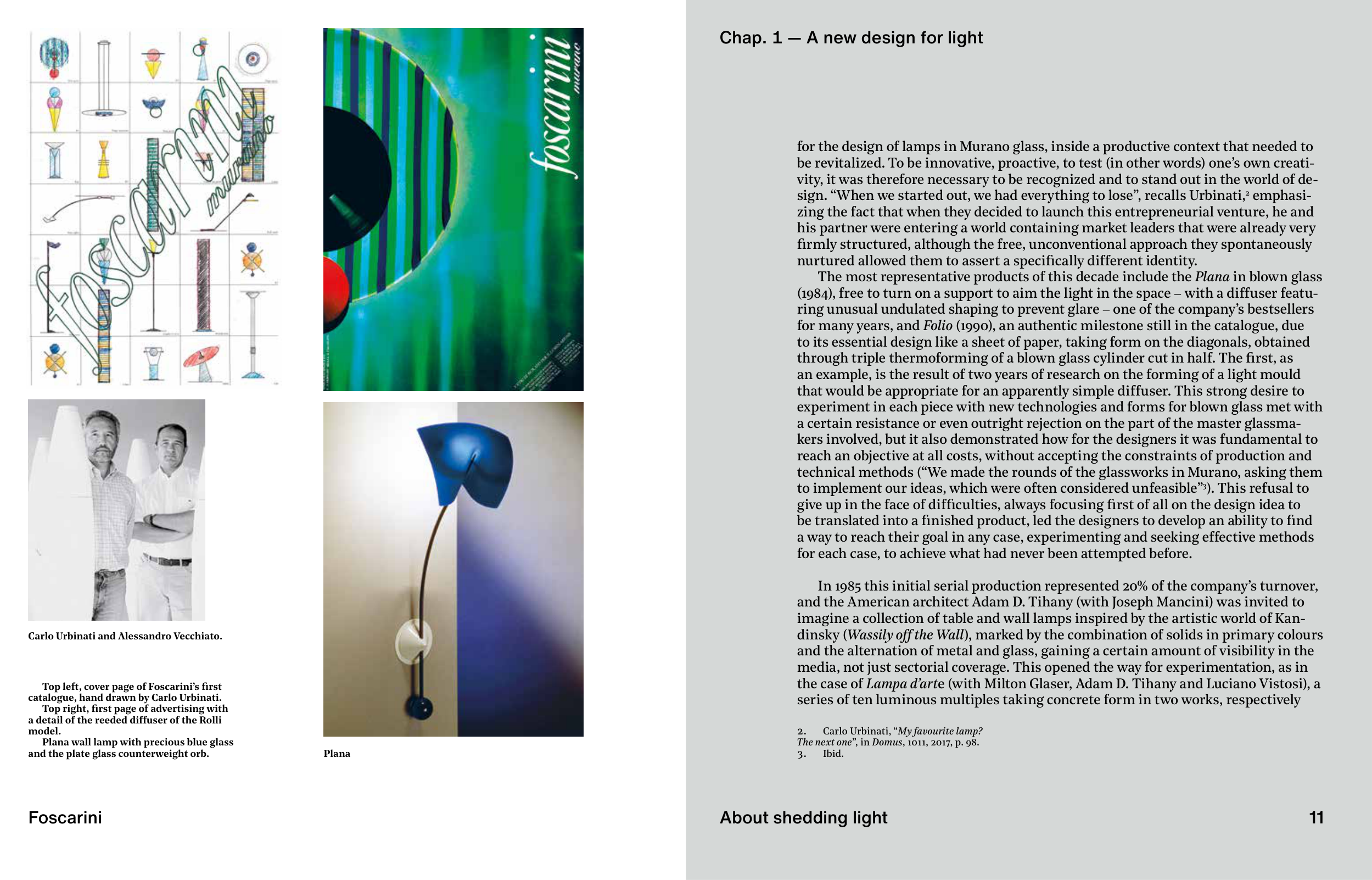11
Foscarini
Chap. 1 — A new design for light
About shedding light
for the design of lamps in Murano glass, inside a productive context that needed to
be revitalized. To be innovative, proactive, to test (in other words) one’s own creati-
vity, it was therefore necessary to be recognized and to stand out in the world of de-
sign. “When we started out, we had everything to lose”, recalls Urbinati,2 emphasi-
zing the fact that when they decided to launch this entrepreneurial venture, he and
his partner were entering a world containing market leaders that were already very
fi rmly structured, although the free, unconventional approach they spontaneously
nurtured allowed them to assert a specifi cally different identity.
The most representative products of this decade include the Plana in blown glass
(1984), free to turn on a support to aim the light in the space – with a diffuser featu-
ring unusual undulated shaping to prevent glare – one of the company’s bestsellers
for many years, and Folio (1990), an authentic milestone still in the catalogue, due
to its essential design like a sheet of paper, taking form on the diagonals, obtained
through triple thermoforming of a blown glass cylinder cut in half. The fi rst, as
an example, is the result of two years of research on the forming of a light mould
that would be appropriate for an apparently simple diffuser. This strong desire to
experiment in each piece with new technologies and forms for blown glass met with
a certain resistance or even outright rejection on the part of the master glassma-
kers involved, but it also demonstrated how for the designers it was fundamental to
reach an objective at all costs, without accepting the constraints of production and
technical methods (“We made the rounds of the glassworks in Murano, asking them
to implement our ideas, which were often considered unfeasible”3). This refusal to
give up in the face of diffi culties, always focusing fi rst of all on the design idea to
be translated into a fi nished product, led the designers to develop an ability to fi nd
a way to reach their goal in any case, experimenting and seeking effective methods
for each case, to achieve what had never been attempted before.
In 1985 this initial serial production represented 20% of the company’s turnover,
and the American architect Adam D. Tihany (with Joseph Mancini) was invited to
imagine a collection of table and wall lamps inspired by the artistic world of Kan-
dinsky (Wassily off the Wall), marked by the combination of solids in primary colours
and the alternation of metal and glass, gaining a certain amount of visibility in the
media, not just sectorial coverage. This opened the way for experimentation, as in
the case of Lampa d’arte (with Milton Glaser, Adam D. Tihany and Luciano Vistosi), a
series of ten luminous multiples taking concrete form in two works, respectively
2.
Carlo Urbinati, “My favourite lamp?
The next one”, in Domus, 1011, 2017, p. 98.
3.
Ibid.
11
Plana
Top left, cover page of Foscarini’s fi rst
catalogue, hand drawn by Carlo Urbinati.
Top right, fi rst page of advertising with
a detail of the reeded diffuser of the Rolli
model.
Plana wall lamp with precious blue glass
and the plate glass counterweight orb.
Carlo Urbinati and Alessandro Vecchiato.


